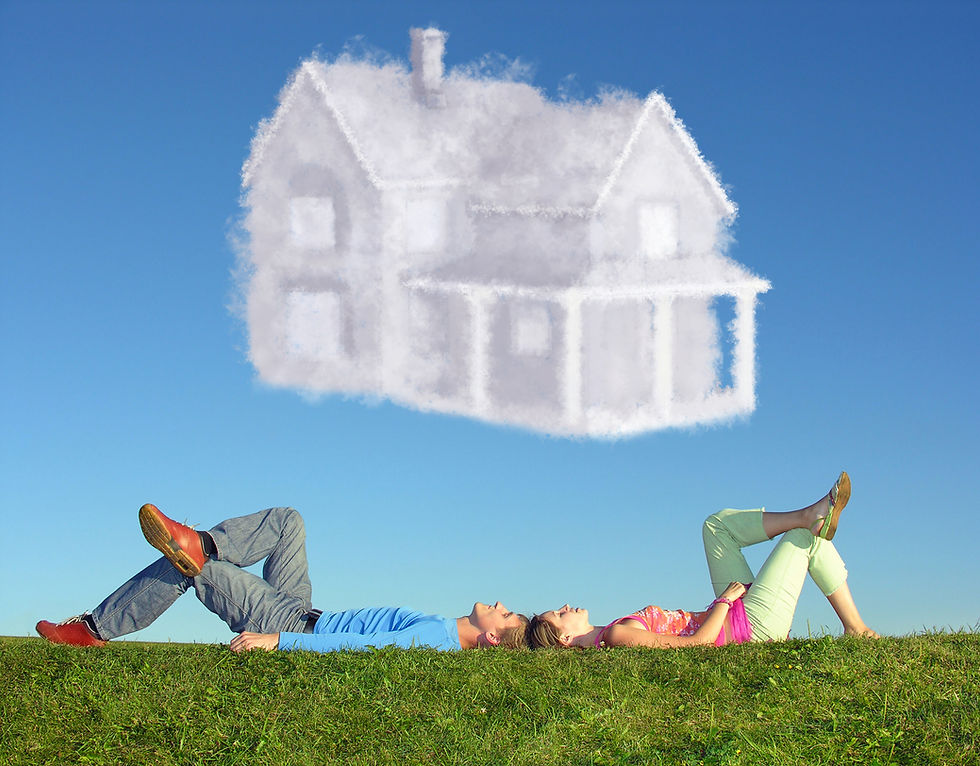So You Want a Happy Home? Pour on the Color
- Marni Jameson

- Feb 13, 2023
- 4 min read
Updated: Feb 16, 2023

I flip through a lot of home design books in this job. Frankly, most run together. In fact, collectively, they could all be one big beautiful book of homes. However, “Design Happy ─ Colorful Homes for the Modern Family” (available Feb. 21, Gibbs Smith Publishing) stands out as the exception.
All the interiors featured in the book’s photo-filled 224 pages jump out for their bright, unapologetic use of color, happy color.
“You can do that?” was a thought that struck me more than once, as I looked through an advanced copy.
Yes, you can.
Well, at least Betsy Wentz, the creative force behind the interiors and the book’s author, can.
Wentz, 49, grew up working alongside her mother, an interior designer who ran a design shop out of the family home. Wentz went off to pursue a career in psychology and, in 2001, after working for several years as a counselor, came back and partnered with her mentor mom. When her mother retired ten years later, Wentz rebranded herself and launched her own studio near Pittsburgh.
Think about that: A designer trained as a counselor. This makes perfect sense.
But back to the book. Besides “You can do that?” the other thought I kept having was geez-oh-man this woman has nerve. Now, of all the traits I admire in designers, creative courage tops my list, and Wentz has this gift in paint buckets.
I mean, this woman did not pause before covering an heirloom antique wooden grandfather clock ─ which let’s face it, few people really want in their homes anymore but are afraid to mess with lest Great Grandpa Methuselah burst forth from the inner chamber ─ with bright yellow citron lacquer paint, which made everyone in the family fall in love with it.
I needed to talk to her. So, I called Wentz, who, proved just as colorful in conversation:
Q. So, you have a master’s degree in counseling psychology, and were a behavioral therapist before starting a design firm. How do those two worlds relate?
A. At first I didn’t think there was any correlation, but in fact, I use that degree every day. Designing someone’s home becomes very personal. From the moment you start working with someone, building that relationship is imperative because that people piece in the middle is what makes a project click. I think every designer should have this degree.
Q. Did the title “Design Happy” spring from your therapy background?
A. Yes, in a sense. I like to think the common thread when you look through these interiors, which range from traditional to modern, is they are happy environments. We wanted a title that would get across that this book is about having fun with color, design and pattern. Your surroundings affect your mood and your quality of life. I tell clients let’s start with colors you’re comfortable with, then let’s add one that you are a little uncomfortable with.
Q. Of all the colors in your interiors, intense blue, especially deep turquoise, seems to be the common denominator. Why?
A. Let me start by saying there is not a color I don’t like. I even see a place for gray, black and white, but blue! I’ve never met anyone who doesn’t like blue. I try to find a color combination that is unique to each client, and in their bandwidth. If a client really wants neutral, I go high contrast. I put white with aubergine. However, a medium bright palette is my favorite.
Q. Because of their colorful interiors, the homes in your book look as if they are all in bright sunny places. But many are near you in Pennsylvania, and others are in Ohio and Maine. Talk to me about color and geography.
A. That a home in an area not saturated in natural color can’t be colorful is a mistaken stereotype. I live in Pittsburgh. Today it’s very gray and drab out. The trees have no leaves, but my home is full of color. Just because it’s Maine, doesn’t mean you have to decorate in dark green. I see a place for color everywhere. Don’t ignore your setting, but do add splashes of color.
Q. You’re known for having a signature touch. How would you describe that?
A. For me, it’s a twist. It can be an unexpected pattern on pattern, or having the nerve to put two patterns or colors together that most people wouldn’t. I use a lot of colorful vintage rugs. You have to be careful not to cross the line of too much, but the longer I do this, the more permission I give myself.
Q. What makes you cringe when you walk into someone’s home?
A. Circular rugs, I don’t know why. Vertical blinds, in general. Poor lighting, particularly a fixture that is too small for the space. You can almost never go wrong with a big light. Ceiling fans with built-in lights are never okay. We call them fandeliers. Just get a plain fan and add recessed lights.
Q. If you had one word of design advice for those of us trying to liven up our homes, what would it be?
A. Go for what you like. Most people know what they like, but are afraid to take a chance on a great color or pattern because, they say, “I’m afraid I’m going to get tired of it.” That’s no fun at all. If you love something own it and do it. That’s also a metaphor for life. Don’t be afraid.
CAPTION: Unabashedly colorful -- “The longer I do this, the more permission I give myself,” said interior designer Betsy Wentz, who featured this historic Sewickley Valley, Penna., home among others, in her new book. Photos courtesy of Caulin Grant.




Comments